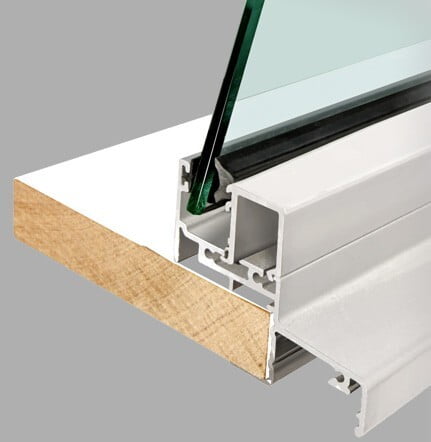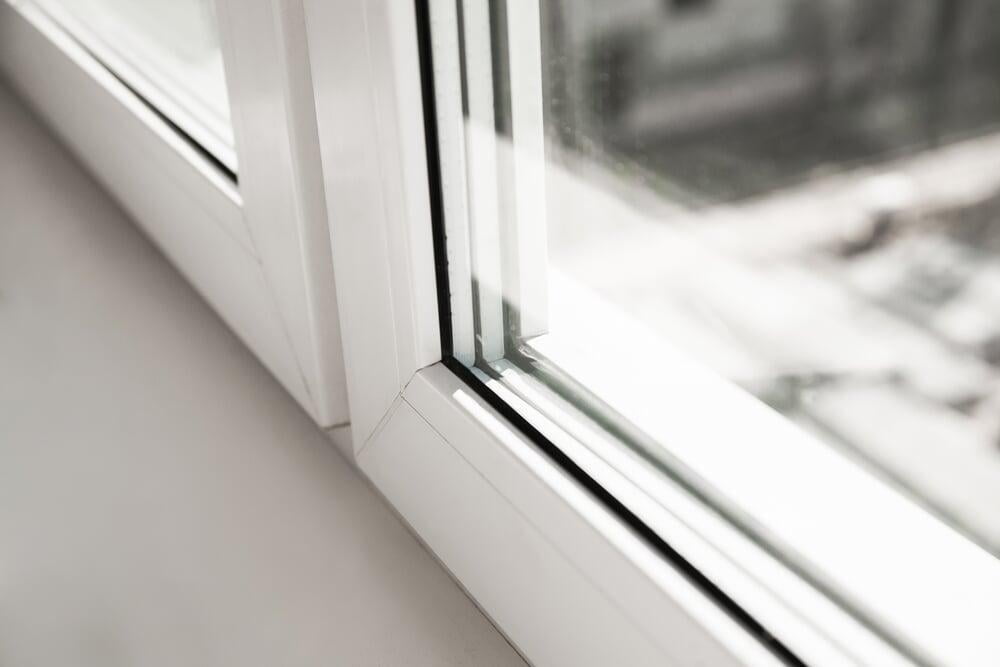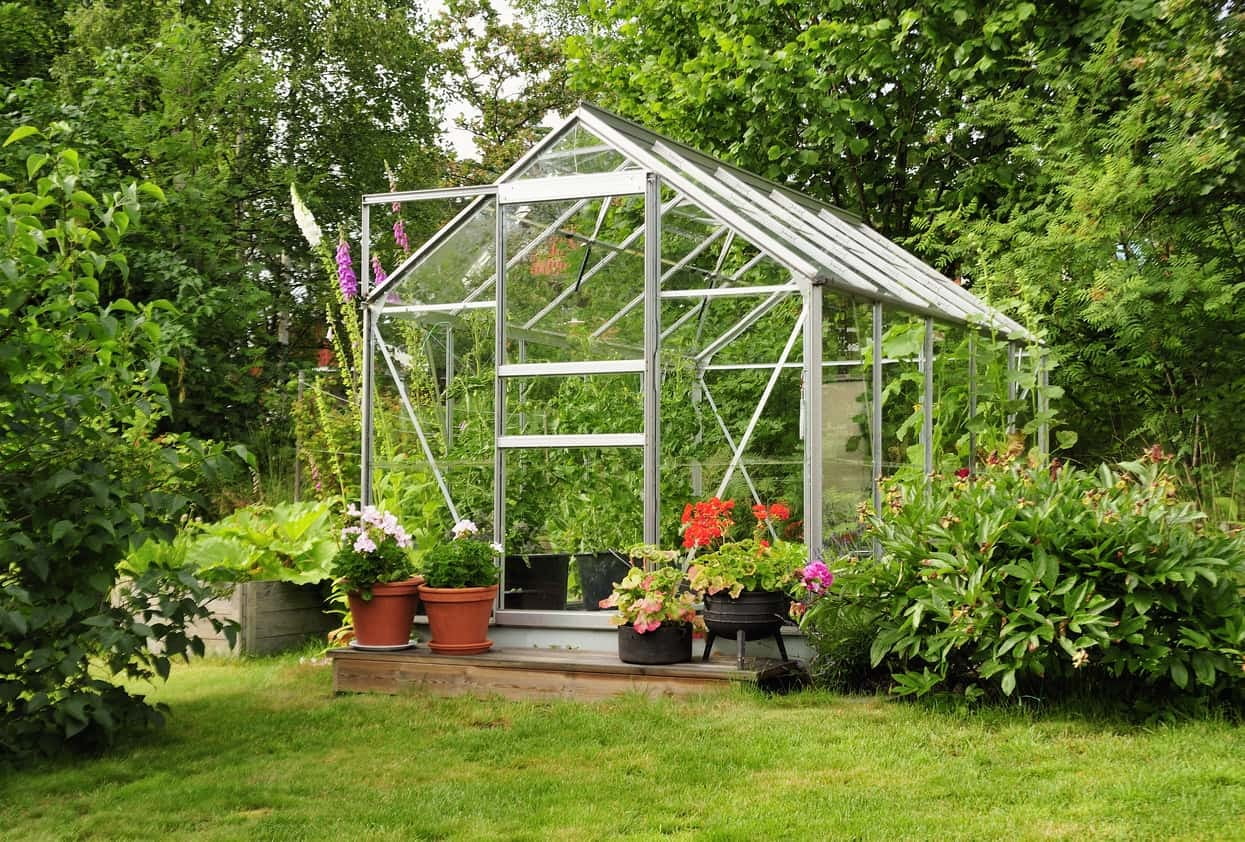Single glazing has been a fundamental element in the construction of buildings for centuries, serving as a straightforward solution for filling openings in walls with natural light while providing a barrier against the elements. Traditionally, single glazing was the norm in many homes and buildings, offering a simple yet effective means of window construction through the use of a single layer of glass. While advancements in window technology have led to the development of more sophisticated glazing solutions like double and triple glazing, single glazing windows and single glazed glass continue to be utilised for their unique properties and advantages in certain situations. They embody a simpler time and can be particularly relevant in regions with mild climates or in structures where preserving historical integrity is paramount.
The Basics of Single Glazing
Definition and Characteristics
Single glazing is defined by its construction, which uses a single pane of glass within a frame. This straightforward configuration is known for its clarity and ease of installation. Historically, it has been a go-to choice for windows due to its simplicity and the minimal resources required for its manufacture and installation. Single glazing is particularly noted for its directness in allowing natural light to penetrate indoor spaces, maintaining an unobstructed view of the outdoors.
Advantages of Single Glazing
Cost-Effectiveness
Single glazing is significantly more cost-effective than double or triple glazing. The materials and manufacturing processes involved in producing single glazed windows are simpler and less resource-intensive, resulting in lower upfront costs. This makes single glazing an appealing option for property owners with limited budgets or for projects where financial constraints are a primary consideration.
Ease of Repair and Maintenance
The simplicity of single glazed windows extends to their repair and maintenance. Unlike double or triple glazed units, which may require specialist skills and materials to repair (especially if the seal between the panes fails or if there is condensation between the panes), single glazed windows can be repaired more easily. Glass panes can be replaced without the need for specialised equipment or techniques, ensuring that maintenance and repair works are straightforward and less costly.
Suitability for Certain Climates and Buildings
In climates where temperature variations are mild and the need for thermal insulation is minimal, single glazing provides adequate performance without the additional expense of more complex glazing options. Similarly, in historic buildings where preserving the architectural integrity is paramount, single glazing can be the preferred choice to maintain the building's original appearance while fulfilling basic functional requirements.
Disadvantages of Single Glazing
Poor Thermal Insulation
The most notable disadvantage of single glazing is its inferior thermal insulation properties. Single glazed windows consist of a single layer of glass, which does not effectively prevent heat transfer. During the winter, heat escapes easily from the interior to the exterior, requiring more energy to maintain comfortable indoor temperatures. Conversely, in the summer, heat can enter the building more readily, potentially leading to overheating and discomfort. This inefficiency in thermal insulation can result in higher energy costs for heating and cooling.
Increased Energy Costs
Due to the poor thermal insulation offered by single glazing, buildings with these windows may experience higher energy consumption. The need for additional heating in cold weather and cooling in warm weather leads to increased energy costs. Over time, the savings made on the initial installation of single glazed windows can be offset by higher utility bills, making them less economically advantageous in the long term, especially in regions with extreme weather conditions.
Limited Noise Reduction
Single glazed windows are also less effective at reducing noise from outside. The single layer of glass does little to dampen sounds from traffic, construction, or other sources of urban noise. For properties in noisy environments or for individuals sensitive to sound, the lack of acoustic insulation can significantly impact comfort and quality of life. This makes single glazing less suitable for buildings in busy urban areas or near airports, where noise pollution can be a major concern.
Single Glazing Windows
Types of Single Glazing Windows
Single glazing windows, featuring a single layer of glass, come in a variety of styles each suited to different architectural aesthetics and functional needs:
Sash Windows: Traditionally found in Victorian and Georgian homes, sash windows consist of one or more movable panels, or "sashes". These can slide vertically or horizontally, providing excellent ventilation. The elegance of sash windows often complements period properties beautifully, adding to their historical charm.
Casement Windows: These are hinged on the side and swing outwards or inwards, providing good ventilation and unobstructed views. Casement windows are versatile and can fit well with a variety of architectural styles, from traditional to contemporary.
Fixed Windows: As the name suggests, fixed windows do not open. They are designed to offer expansive views and let in light, making them ideal for locations where ventilation is not a primary concern, such as in stairwells or as part of a larger window installation.
Tilt and Turn Windows: These provide a dual-functioning; they can tilt inwards from the top for ventilation or swing in like a door for easy cleaning and emergency egress. Tilt and turn windows are popular in modern European designs and offer a high level of security.
Bay and Bow Windows: These protrude from the building façade, creating a bay or bow shape. They are composed of multiple window units, often including fixed and operable windows, providing panoramic views and extra interior space.
Awning Windows: Hinged at the top and opening outward from the bottom, awning windows are ideal for allowing ventilation while protecting the interior from rain. They work well in a variety of settings, including above doors or paired with large fixed windows.

How to Choose the Right Single Glazing Window
When selecting single glazing windows, consider the following factors:
Architectural Style: Ensure the window style complements the building's architectural characteristics. Traditional homes might benefit from sash or casement windows, while modern buildings could look better with fixed or tilt and turn styles.
Local Climate: The local weather patterns should influence your choice. For instance, areas with high rainfall might suit awning windows, which can be opened during rain without letting water in.
Functional Requirements: Consider what you need from your windows. Do you require more light, better ventilation, or a panoramic view? Your specific needs will guide your choice.
Aesthetic Preferences vs. Practical Implications: While aesthetics are important, don't overlook practical considerations such as energy efficiency, maintenance requirements, and security features.
Maintenance Tips for Single Glazing Windows
Proper maintenance is crucial for extending the lifespan and maintaining the functionality of single glazing windows:
Regular Cleaning: Keep both the glass and frames clean to prevent the accumulation of dirt and grime. Use a gentle cleaner and a soft cloth to avoid scratching the glass.
Inspections: Regularly inspect your windows for signs of damage, including cracks in the glass, rotting frames (in the case of wooden windows), or deteriorating sealant. Early detection and repair can prevent more serious issues.
Sealing Gaps: Ensure that any gaps around the window frames are sealed to prevent drafts and improve energy efficiency. Use weather stripping or caulk as needed.
Lubricate Moving Parts: For windows that open, regularly lubricate hinges, tracks, and locks with a silicone-based lubricant to ensure smooth operation.
Single Glazed Glass
Benefits of Single-Glazed Glass
Single glazed glass is celebrated for its ability to maximise natural light and offer unobstructed views, creating a sense of openness and connection with the outdoors. This can enhance the aesthetic appeal of a space, making it feel more welcoming and vibrant. The simplicity of single glazed glass also allows for greater flexibility in window design, enabling the creation of large, picturesque windows that can serve as focal points in a room's design.

Applications of Single Glazed Glass
Single glazed glass, with its simplicity and traditional appeal, is utilised in various applications, catering to both functional and aesthetic needs across different settings. Here's a detailed exploration of its primary applications:
1. Interior Partitions
In modern interiors, single glazed glass serves as an elegant solution for creating partitions between spaces. This application is especially prevalent in offices, residential homes, and commercial areas where the goal is to divide rooms without obstructing light flow. These partitions facilitate an open and airy feel, promoting a sense of connectivity between different areas while still offering a level of privacy. The transparency of single glazed partitions allows for natural light to permeate through spaces, reducing the need for artificial lighting and contributing to a more energy-efficient environment. Moreover, they can be customised with various finishes and frames to complement the interior design, ranging from minimalistic frameless designs to more classic styles with wooden or metal frames.
2. External Windows in Mild Climates
Single glazed windows are commonly found in buildings located in milder climates where extreme temperature variations are rare, and thermal insulation is not a primary concern. In such locales, the simplicity of single glazing is sufficient to provide protection against the elements while allowing maximum natural light entry. These windows are cost-effective and easy to install, making them a popular choice for budget-conscious projects or temporary constructions. However, it's worth noting that in regions with colder climates, single glazed windows may lead to increased energy costs due to heat loss, underscoring the importance of considering local weather conditions when choosing window types.
3. Restoration of Historic Buildings
Preserving the historical integrity of heritage buildings is a critical concern in restoration projects. Single glazed windows play a pivotal role in such endeavours, as they replicate the original window designs used in older constructions. The use of modern materials and techniques allows for the production of single glazed glass that matches the aesthetic and stylistic elements of historic windows while providing better durability and functionality. This application underscores the balance between maintaining architectural authenticity and ensuring the usability of heritage sites, offering a glimpse into the past without sacrificing the structural integrity of the building.
4. Greenhouses
Greenhouses utilise single glazed glass extensively to create optimal conditions for plant growth. The primary goal in a greenhouse is to maximise light penetration, and the clarity and transparency of single glazed glass make it an ideal choice. It allows for the full spectrum of sunlight to enter, which is essential for photosynthesis, while providing a basic level of protection against the elements. Although more advanced glazing options are available for temperature control and energy efficiency, single glazed glass remains popular for smaller greenhouses or those in warmer climates due to its affordability and effectiveness in facilitating plant growth.
These applications highlight the versatility of single glazed glass, demonstrating its continued relevance in modern construction and design, despite the advent of more advanced glazing technologies. Its ability to meet specific aesthetic and functional requirements, from enhancing natural light to preserving historical character, underscores the enduring value of single glazing in the architectural landscape.

Comparing Single Glazed Glass with Alternatives
Comparing single glazed glass with its double or triple-glazed counterparts highlights several key differences in performance and application:
Energy Efficiency: Single glazed windows are less energy-efficient than double or triple-glazed windows. The latter options have additional layers of glass and insulating gases that significantly reduce heat transfer, making them more suitable for regions with extreme weather conditions. Upgrading to double or triple glazing can lead to substantial savings on energy bills due to improved thermal insulation.
Noise Reduction: Single glazing is less effective at sound insulation compared to multi-glazed alternatives. Double and triple glazing can dramatically reduce noise penetration due to the air or gas layers between the glass panes, which act as a sound barrier.
Cost and Aesthetics: Single glazing is generally less expensive and can be more aesthetically pleasing in certain architectural contexts, such as in historic buildings where maintaining the original appearance is crucial. The simplicity of single glazing can also complement modern design by offering cleaner lines and more light.
Reasons to Upgrade from Single Glazing
Upgrading from single to double or triple glazing is driven by several compelling reasons:
Enhanced Thermal Insulation: The primary motivation for upgrading is the significant improvement in thermal insulation. This not only makes a building more comfortable by maintaining a stable indoor temperature but also reduces reliance on heating and cooling systems, leading to lower energy consumption and costs.
Reduced Energy Costs: The improved energy efficiency of double or triple-glazed windows can lead to considerable savings on heating and cooling bills. The initial investment in upgrading can often be recouped over time through these savings.
Improved Comfort and Noise Reduction: Double and triple glazing offer a more comfortable living environment by eliminating drafts and reducing the impact of external noise, such as traffic or aircraft. This can be particularly beneficial in urban or noisy environments.
Increased Property Value: Upgrading to more efficient glazing can also enhance the value of a property. It's a desirable feature for potential buyers who value energy efficiency and comfort.
Conclusion
While single glazing may seem outdated in the face of modern, more insulated options, it retains its relevance and charm in specific applications and settings. Its simplicity, cost-effectiveness, and particular aesthetic appeal make it a suitable choice under certain conditions. However, for those seeking to improve their property's energy efficiency, comfort, and noise insulation, upgrading to double or triple glazing with the help of Ipswich Glass represents a smart investment. Through professional guidance and expert installation, Ipswich Glass can transform your windows into modern, efficient features that contribute to a more comfortable, sustainable home.
FAQs
Q1: Is single glazing cheaper than double glazing?
Yes, single glazing typically involves lower initial costs due to its simpler construction. However, it's important to consider the long-term energy savings that more insulated windows can provide.
Q2: Can I replace single glazing with double glazing in my historic home?
Absolutely. Ipswich Glass offers solutions that respect the aesthetic and architectural integrity of historic properties while providing the benefits of modern window technology.
Q3: How does single glazing impact energy bills?
Single glazing is less effective at insulating a home, leading to higher energy costs as more heat is lost in winter and gained in summer. Upgrading to more efficient glazing can reduce these costs significantly.
Q4: Are there any situations where single glazing is preferred?
Yes, in listed buildings, conservatories, or areas with mild climates where thermal insulation is less critical, single glazing can be a suitable choice due to its aesthetic qualities or cost considerations.
Q5: How can I improve the insulation of single glazed windows?
Applying secondary glazing solutions or using heavy curtains can offer temporary improvements to the insulation properties of single glazed windows. However, these are not substitutes for the benefits of double or triple glazing.


